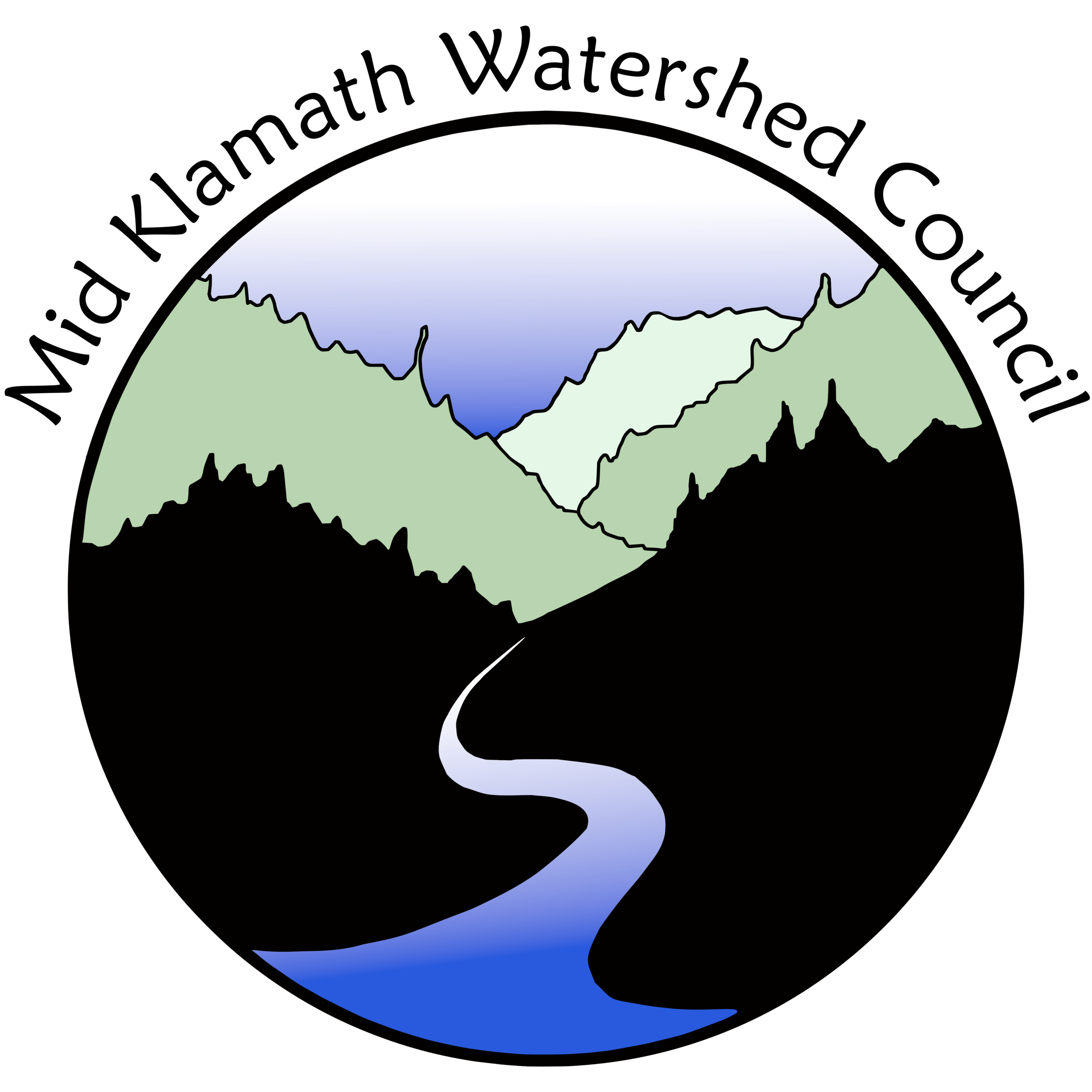Immersing In The Flow of Time
by Michael Max Hentz
All of a sudden spring is back in the air. The alder catkins are hanging out in the wind. Leaf buds taut ready to burst, spring plants popping. Song birds returning, snow will be melting. Sun’s rising higher and days grow longer, even the stars are shifting back to summer configurations.
It is coming on 10 years this May since I moved back to live again within the Klamath Mountains. Somehow, as time passes and I get older, I become more respectful of these changes, I believe partly because of an awareness of my own finiteness. It is as if I miss it already and I am yet still here. Below you can see the scene in my backyard as it changes with the passage of time.
A lot of us live remotely, surrounded by creeks and rivers, forests and mountains. Living “in” the Klamath creates strong connections. Our food and energy systems rely on it; our water, often taken from springs, is a signal of our relationship, particularly during these last dry years. Many subtle changes occurring simultaneously are easily overlooked and then there are the more dramatic changes, the fires and floods, snowstorms, rockslides, births and the deaths. All are encompassed within this river of time.
Working for the Mid Klamath Watershed Council (MKWC), I reflect on the youth (such as the ones pictured to the right) who have grown up in this country and who have participated in our programs, including watershed education events, school field trips, rafting adventures, noxious weed pulls, even prescribed fires… You see a picture from 8 years ago when the kids were six and now they are 14, or they were 13 and now they are sophomores in college. Some of these youth return to work on field crews for MKWC during the summer. How much have they been learning and growing during this period which to me seems to be moving by so fast? It was just yesterday that they were learning to shift the flow of water to improve fish passage for migrating salmon, to identify and pull invasive weeds that compete with native plants, to wield a shovel or a drip torch on a fireline, and maybe most importantly, to understand the changing conditions on the ground.
Then there are the historic changes to the country. Western Europeans entering the Klamath in search of beaver and gold created a cataclysmic disturbance with cultural and ecological consequences unimaginable and still reverberating. The move into the forests for timber to build after the great world war, roads were constructed to take us there, to protect the forests from fire “Smokey The Bear” led us there. Our actions created unintended consequences we are now struggling with, let alone paying for…We are trying to learn and re-invent our way out of this, something that takes time.
Rightfully, there is a renewed effort to learn from and reinstitute local native cultural practices, what is known to some as “Traditional Ecological Knowledge”. This understanding was developed, tried and true as they say, in this place by countless generations of practitioners and is finally being respected. It’s about time. There is concurrent development in Western science in the fields of forest and river management that gives me hope: putting fire back into the landscape and pulling out dams. In other words, we are beginning to learn an approach to stewardship with a longer view.
I remember the flood of 1997 and how shaded cool creeks with deep pools and stately canopies of alders, maples and cottonwood overhead were turned into broad riffles in the full sun, pools filled in with sediment where water temperatures rose. This flood was kin to the last large “El Niño”, the cyclical Pacific weather pattern which returned to us this year. But those flood effects were also related to the more immediate local management of our uplands. The roads that were perched on too-steep slopes, forests denuded of protecting cover and many culverts were not quite “right sized”. This combination moved mountains in short order. You look at photos of the same streams today and it is breathtaking how fast alders grow, how continually the creek changes and how the natural rehabilitation of the stream channel works its magic. My fisheries friends talk about gravel recruitment and large woody debris inputs enhancing spawning and rearing habitat, a result of floods, an apt metaphor- “that time heals all wounds”. Here, you can see the effects of flooding in Grider Creek watershed, a key salmon bearing tributary to the Middle Klamath:
Another saying is that only time will tell. My hope is that we will keep learning to live well and respectfully with the Klamath Mountains, but I am not always sure time is on our side. There is a Latin phrase fugit inreparabile tempus “It escapes, irretrievable time”, also known simply as time flies, so we better keep working on it.
Oh yeah! And don't forget to turn your clocks forward on Sunday, the 13th of March at 2 a.m., because we cannot even leave time itself alone.
Michael Max Hentz lives in the Elk Creek watershed, a major tributary stream in the Middle Klamath subbasin. He works primarily in MKWC’s Fisheries, Fire and Fuels, and Watershed Education Programs.







